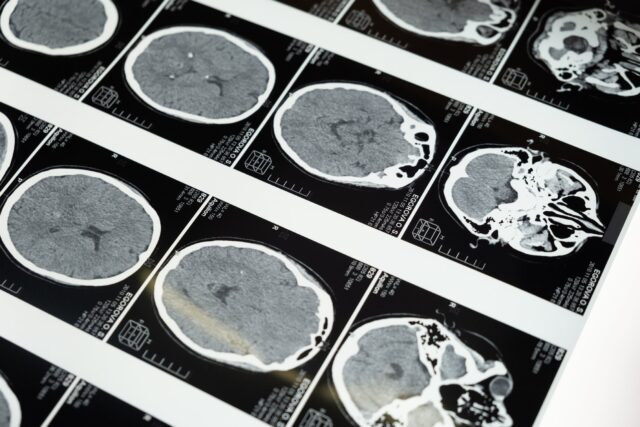For thousands of years, civilizations all over the world have observed the powerful effects of magic mushrooms. Only in the past few decades however, have scientists had the technology to research the inner workings of the brain during and after a psychedelic trip. Numerous controlled studies have revealed several psychological effects that commonly take place among those who consume large doses of shrooms.
The better we can understand the chemical processes that occur in the brain after taking psychedelic drugs like magic mushrooms, LSD, or DMT, the more potential we have to harness these substances for medical use. Additionally, expanding the body of research surrounding shrooms paves the way for users to safely consume psilocybin products and control their psychological reactions.
The mental effects caused by magic mushrooms are often depicted in pop culture as colorful, distorted, happy, and hallucinogenic. However, medical researchers are typically more interested in more subtle, long-term effects such as decreased anxiety and improvements in nervous system regulation. Let’s take a look at the science to find out how exactly these incredible plants work their magic.
Form new communication networks
In recent years, studies on magic mushrooms have been done where subjects were hooked up to brain scanning technology and closely monitored for the entire duration of their psychedelic trips. These complex studies have provided enough data for researchers to compare a substantial number of scans and look for common changes in brain activity between subjects.
One of the most fascinating findings that has been identified as a result of brain scanning technology is changes in communication networks throughout the brain. Separate regions of the brain are responsible for processing sensory information such as sounds, colors, and physical sensations. Our total perception of the world around us is formed by way of neural pathways that communicate and pass information from one region to another.
Unsurprisingly, the human brain carves out frequently used pathways that produce our normal experience of the world. However, during a magic mushroom trip, subjects formed unique neural pathways, connecting brain regions that do not normally communicate with each other. Researchers speculate that these new connections are the reason for hallucinations and other sensory distortions. Experiencing new ways of processing information may also be the reason why users frequently report relief from chronic mental health disorders such as depression and anxiety.
Stimulation of the prefrontal cortex
As previously mentioned, normal brain processes are supported by diverse regions of the brain that play various unique roles in cognition. One of these regions is known as the prefrontal cortex, which is located in the frontal lobe, and is largely responsible for the abstract thinking that is associated with hallucinogens. During a magic mushrooms trip, studies have shown that this region of the brain becomes particularly active. This area is where we analyze our thoughts, which results in certain thought patterns that contribute to either an uplifted, suppressed, or neutral mood. Distortion and stimulation of this analytical part of the brain can therefore manipulate our visual experiences and trigger emotional transformations.
Increase of serotonin
On a chemical level, it is not an exaggeration to say that serotonin is the foundation of optimal mental health in humans. This neurotransmitter is naturally produced by the body as a way of regulating our mood, sleep patterns, libido, and other key players in our overall well-being.
Due to the positive, feel-good effects of serotonin, this chemical is also the basis of many popular, uplifting substances such as ecstasy, MDMA, and others. Unlike the aforementioned drugs, the psychological effects of magic mushrooms extend far beyond a brief surge in serotonin. However, this is one of the factors that produces the feelings of joy, inner peace, and laughter that people normally experience while high on magic shrooms.

Disrupt 5-HT2A receptors
The human brain is home to a plethora of receptors that are responsible for identifying and reacting to chemical input. 5-HT2A receptors for instance, are necessary for processing serotonin in the body, and have been proven to be overactive in the majority of people suffering with chronic depression. Once this process becomes ingrained in the brain, it can become difficult to treat the disorder with common medications such as SSRIs. This is worth mentioning because it has also been found that subjects who consumed a dose of magic mushrooms experienced a significant disruption in 5-HT2A receptor activity. While it is too early to guarantee a correlation, this shrooms-induced effect has caught the attention of many medical professionals.
As we’ve seen, there are so many contributing factors that produce the psychological effects we experience after taking various doses of magic mushrooms. The more informed you are on how psychedelic drugs work in the brain, the more you can safely reap the benefits of nature’s gifts. Tailor your experience by choosing from our wide selection of top-rated magic mushroom strains.
Sources: https://www.ucsf.edu/news/2022/04/422606/psilocybin-rewires-brain-people-depression
https://www.sciencealert.com/here-s-what-magic-mushrooms-does-to-your-body-and-brain
https://www.goodtherapy.org/blog/psychpedia/prefrontal-cortex


